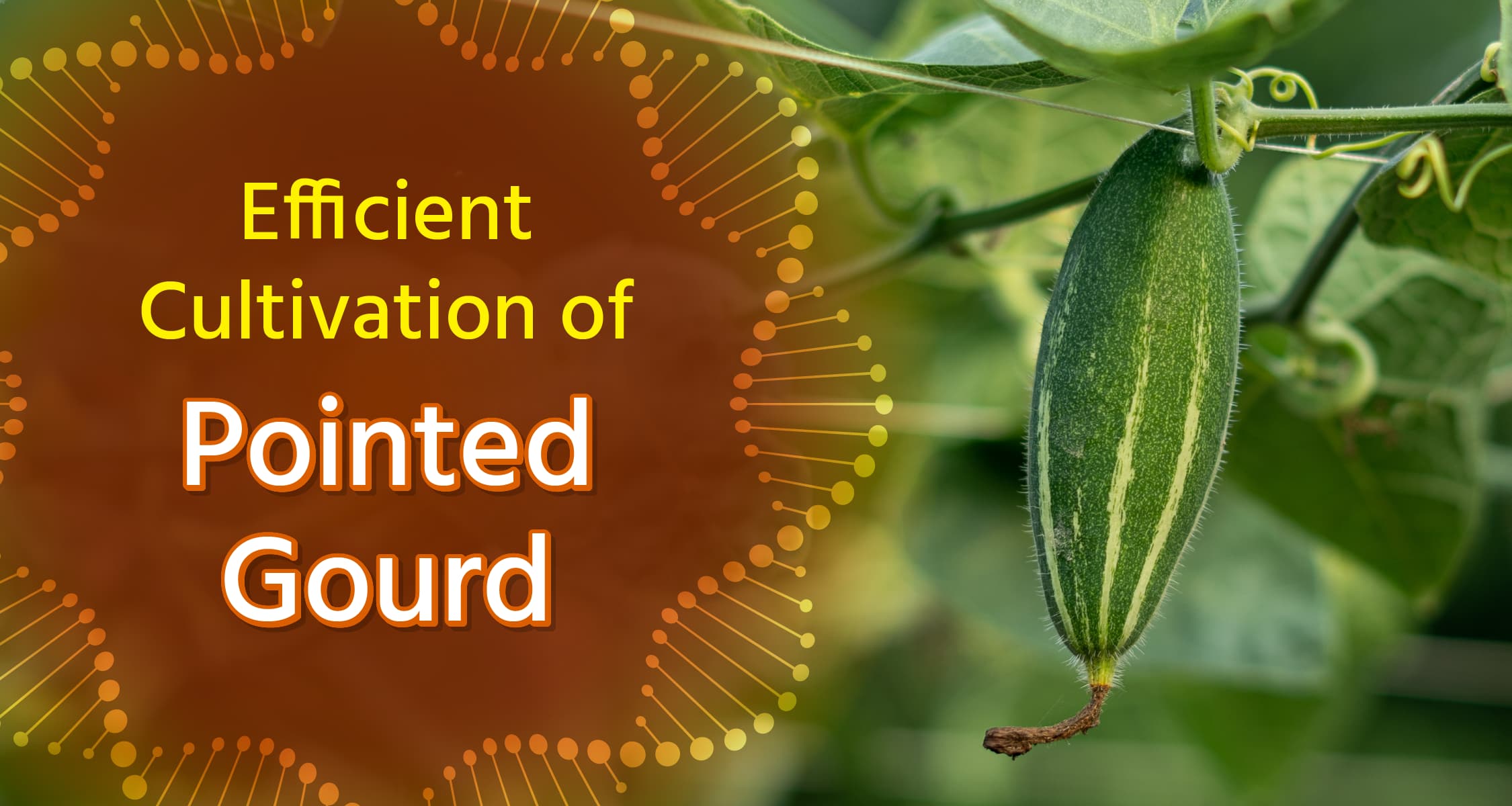पोस्ट विवरण
Pointed Gourd Cultivation: Suitable Soil, Land Preparation, Weed and Pest Control

The pointed gourd, also known as 'parwal' locally, is a member of the gourd family and a popular vine crop. Being a perennial crop, it yields fruits for 5-6 years after a single planting. To maximize yields, it's crucial to apply fertilizers in the correct amounts after each yearly harvest. There are several important factors to consider for successful cultivation of pointed gourds. Therefore, please read this post carefully to understand these crucial details.
Cultivation of Pointed Gourds
Suitable Time for Pointed Gourd Cultivation
- Its cultivation may vary according to different locations.
- In plain areas, it is sown from mid-July to October.
- In riverine areas (along the banks of rivers), it is sown in the months of September to October.
Suitable Soil
- Pointed Gourd farming can be done in almost all types of soil except heavy soil.
- To obtain better yields, cultivate in loamy or sandy loam soil with adequate organic matter.
- Avoid farming in waterlogged areas.
Land preparation
- First, execute a deep plowing in the field.
- After that, plow lightly 3 to 4 times.
- After plowing, ensure that the soil is friable and level the field.
Method of Sowing
The cultivation of pointed gourds involves both the sowing of seeds and the transplanting of vines.
- Method of Sowing Seeds: For this, sow the seeds first in a nursery and prepare the seedlings. Transplant them into the main field between 2-3 months of growth. However, with this method of farming, there is often a higher proportion of male plants compared to female plants, which can lead to reduced yields.
- Root and Vine Transplanting: For cultivating pointed gourds using this method, take 1 or 2-inch long vines with 5-6 nodes along with the roots and plant them. With this method, the plants grow quickly, and fruits also appear on the plants quickly.
Gender and Number of Plants
- In gourds, male and female flowers bloom on separate plants.
- To obtain better yields, it is necessary to have 1 male plant for every 10 female plants.
- The identification of male and female plants can be done through the flowers that grow on them.
- Male plants produce straight and long flowers, while the lower part of the flowers on female plants is thick.
- Female flowers are small and white in color.
Irrigation Management
- Regular watering is necessary for the plants, especially during the flowering and fruiting period, to ensure that there is no lack of moisture in the soil.
- The frequency of irrigation depends on the type of soil, weather conditions, and stage of plant development.
Fertilizer Management
- While preparing the field, use 150 to 200 quintals of cow dung manure per acre.
- Additionally, use 20 quintals of Vermicompost, 2-3 quintals of Neem Cake, 50 kg of DAP fertilizer, 70-90 kg of Urea, 20 kg of Muriate of Potash, 15 kg of Zinc Sulfate, and 10 kg of Borax per acre.
- For better yield of pointed gourds, use 4 kg of 'DeHaat Starter' per acre in the field.
Weed Control
- Conduct weeding 4-5 times between transplanting and fruiting.
- Perform the first-hand weeding 20-25 days after sowing.
- Repeat the process as needed thereafter.
- Mulching can also be used to control weeds.
- Cover the soil around the plants in the field with plastic covers, straws, leaves, etc. properly.
- Herbicide chemicals can also be used to control weeds.
- While using herbicides, avoid using herbicides that are used for broadleaf weeds. These can also damage pointed gourd plants.
Supporting of Plants
- Pointed gourd plants grow like vines.
- Providing support to the plants is very important to obtain a good yield.
- For this, prepare a trellis about 1m to 1.5m high from the surface of the ground.
- Trail the plants onto the trellis and tie them with soft strings or twine to prevent them from falling.
- Parwal is a perennial crop, so constructing a sturdy trellis in the field is beneficial.
Disease and Pest Management
- In the cultivation of pointed gourd, there is a higher incidence of fruit flies, fruit borer, sap-sucking pests, fruit rot disease, mosaic disease, powdery mildew, downy mildew, etc.
- To protect pointed gourd plants from these diseases and pests, keep inspecting the field regularly.
- Use appropriate pesticides upon noticing symptoms of any disease or pest.
- In case of an increase in the incidence of diseases and pests, immediately contact an agri-expert.
Harvesting of Fruits
- Generally, fruits start forming on the pointed gourd plants in the month of March.
- About 10-12 days after the fruits appear, they can be harvested.
- All fruits do not mature at the same time. Therefore, continue harvesting the fruits at intervals of every 3-4 days.
- Do the harvesting while the fruits are soft. Delay in harvesting causes the fruits to start ripening.
What kind of problems do you encounter during the cultivation of pointed gourd? Please share your answers with us in the comments. For other interesting and informative agricultural knowledge, follow the 'Krishi Gyan' channel now. Also, don't forget to like and share this post.
Frequently Asked Questions (FAQs)
Q: How many days do the pointed gourd plants take to bear fruit?
A: Fruits start appearing in the plants approximately 60-70 days after transplanting. The time taken for fruiting may vary depending on the weather conditions, seed quality, and varieties.
Q: Where is pointed gourd cultivated in India?
A: Pointed gourd cultivation is primarily done on a large scale in Uttar Pradesh, Bihar, West Bengal, Odisha, and Assam. Additionally, it is also cultivated in Madhya Pradesh, Chennai, Maharashtra, Gujarat, Kerala, and Tamil Nadu.
Q: What fertilizers should be used in pointed gourd cultivation?
A: Nitrogen, phosphorus, and potassium should be used as per the requirement of pointed gourd crops. Additionally, cow dung manure is also suitable for plant growth. Based on soil testing, you can also apply or use the required micronutrients.
जारी रखने के लिए कृपया लॉगिन करें

फसल चिकित्सक से मुफ़्त सलाह पाएँ
